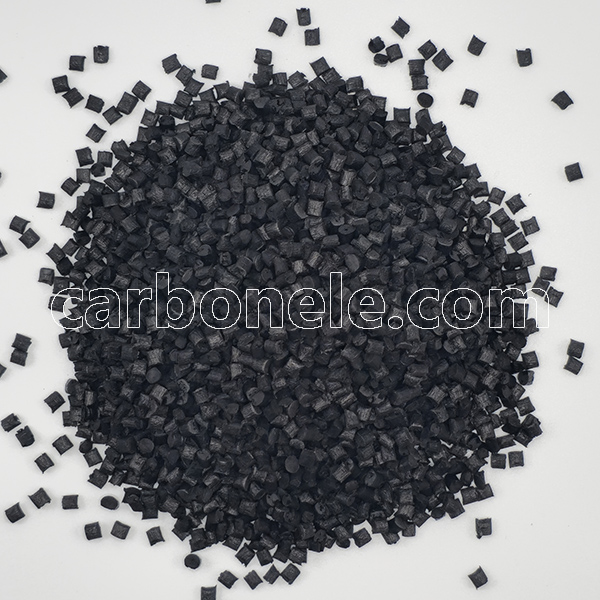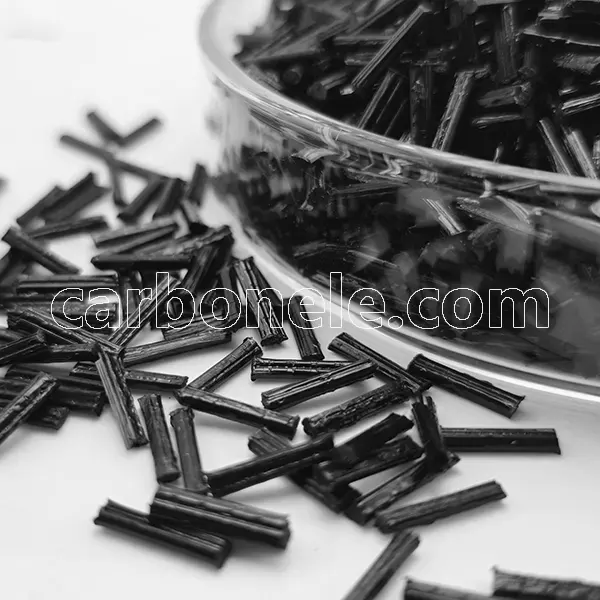What Is The PA610 CF5 Nylon 610 5% Carbon Fiber Combination? - Carbon Fiber Compounds Manufacturer | Supplier
The composite material referred to as PA610 CF5 consists of a matrix made of nylon 610, sometimes known as polyamide 610, or PA610 for short, and 5% carbon fibre, sometimes known as CF for short. This material is common in a wide spectrum because of its several specific physical and chemical properties as well as its combination of the beneficial qualities of nylon 610 with the reinforcing effect of carbon fibre. Both of these elements help the material to be used widely.

Nylon Carbon Fiber Combinations
Different uses and qualities of the Nylon 610 matrix
Semi-crystalline thermoplastic polymer Nylon 610 is well-known for its mechanical properties, chemical stability, and great wear resistance. Its thermoplastic qualities are another point of note. PA610 has a higher melting point and a better resistance to hydrolysis than other nylon materials including PA6 and PA66. This helps it to keep its performance even in humid surroundings. To mention only two examples, other forms of nylon materials are PA6 and PA66.
The effect of carbon fibre on techniques of reinforcement employing carbon
Usually used in the process of reinforcing plastics to improve the mechanical properties of these kinds of materials is a substance called carbon fibre. Made of carbon, carbon fibre is a lightweight material displaying great strength and high stiffness. It is sufficient to improve the stiffness, strength, and wear resistance of the material while yet preserving some degree of flexibility and impact resistance. Although the addition of carbon fibre to PA610 is not very noteworthy, it is sufficient to contribute to the improvement of these features.
Usually, melt mixing and extrusion are the main methods used in processing composite materials and inspection, respectively PA610 CF5. Carbon fibre reinforcement is generated by mixing nylon 610 and carbon fibres in a way that is consistent throughout the mixture at high temperatures. This results in the creation of a continuous carbon fibre reinforcement phase. It is required to exert fine control over the dispersion and orientation of the carbon fibres in order to ensure the performance of the composite material. This is necessary in order for this procedure to be successful.
Where the application may be found
It is possible to make use of the PA610 CF5 in a wide variety of different settings. In the automobile sector, it is feasible to utilise it to make components that are both lightweight and resistant to wear when it is used in the manufacturing process. Bearings, gears, and breaking systems are a few examples of the components that fall under this category. Because of its adaptability, it may be utilised in the electronics sector for the fabrication of housings and structural components for electromagnetic shielding. This is possible because to its flexibility. In addition, PA610 CF5 is suited for the production of wear-resistant components in a variety of applications, including chemical equipment, mechanical parts, and sporting equipment alike.
The impact on the state of the ecosystem and the viability over the long term
Due to the fact that nylon materials can be recycled, PA610 CF5 has a relatively low effect on the environment. Furthermore, the incorporation of carbon fibres into the material not only extends the lifespan of the material but also decreases the frequency with which it has to be replaced, hence lowering the amount of trash that is produced. With the creation of this material, the present need for materials that are favourable to the environment has been satisfied.
enhancement of performance optimisation
In an effort to further enhance the performance of PA610 CF5, researchers are investigating a variety of carbon fibre types, surface treatment techniques, and mixing technologies. The thermal conductivity, electrical conductivity, and self-lubrication of the composite material may all be enhanced by the optimisation of these properties.
Trends in the Market and Potential Future Developments
The market prospects of PA610 CF5 are optimistic, particularly in view of the increased need for materials that are both lightweight and high-performance products. For example, it is anticipated that the demand for this material will continue to increase in the aerospace industry, the electronics industry, and the automotive supply industry.
Improving the Mechanical Properties of the Material
The incorporation of 5% carbon fibre into PA610 CF5 has resulted in a substantial enhancement of the material’s mechanical characteristics, including tensile strength, flexural strength, and impact strength. As a result of this reinforcing action, the material continues to demonstrate enhanced dependability and durability even after being subjected to significant loads and impacts.
Stability of the Properties and Temperatures
Furthermore, the incorporation of carbon fibre into PA610 results in an increase in both the thermal conductivity and the heat deformation temperature of the material. PA610 has a high level of thermal stability on its own. Because of this, PA610 CF5 is able to maintain its structural integrity and mechanical properties even when subjected to high temperatures, making it suitable for use in demanding industrial applications.
Control and Management of Electrical Properties
It is sufficient to supply PA610 with a certain degree of electrical conductivity, despite the fact that the doping level of 5% carbon fibre is not very substantial. Given this property, the material has the potential to be used in a variety of applications, including electromagnetic shielding, sensors, and electrical equipment.
Enhanced characteristics of the surface
As a result of the incorporation of carbon fibre, the surface properties of PA610 are enhanced, including a decrease in the coefficient of friction and an increase in the resistance to wear. Because of this, PA610 CF5 is able to work well in applications such as sliding components and bearings, hence reducing the amount of energy used and the expenses associated with maintenance.
Adaptability of the design
The processing performance of PA610 CF5 is excellent, and it can be manufactured into components with complex shapes via the use of processes such as injection moulding, extrusion, and moulding. Because of this design flexibility, engineers have access to a wide range of design space, which allows them to efficiently meet the requirements of certain applications.
Economic and efficient in terms of cost
Although carbon fibre reinforced materials are often more expensive, a doping ratio of 5% helps to cut costs while still giving significant gains in performance. This is the case even though the materials are typically more expensive. As a result of this, the PA610 CF5 is able to achieve a satisfactory equilibrium between its performance and its cost.

PA610 CF5 Nylon 610 5% Carbon Fiber Combinations
PA610 CF5 is a revolutionary kind of carbon fibre reinforced nylon composite material that has the potential to be utilised in a wide range of industries. In addition to possessing strong mechanical capabilities, chemical stability, and lightweight properties, PA610 CF5 also has the potential to be employed in a number of different industries. PA610 CF5 is expected to play a more important role in the future and contribute to the growth of industries that are active in the same area as a consequence of the continued development of technology and the rising demand in the market for high-performance materials. This is projected to be the case because of the increase in demand for high-performance materials.
Previous News
What is Conductive PA612 CF40 40% Carbon Fiber ...Next News
What is high quality for automotive parts?
Feature Product
-
PA12 LCF30 for Drone Fuselages & Wings
What do you know about PA12 LCF30? PA12 ...
-
Competitive Price PA6 LCF30 Composites
What’s it? PA6 LCF30, which stands...
-
ABS CF10 Compound ABS 10%CF Thermoplastic Compo...
What’s ABS CF10? ABS CF10 refers t...








